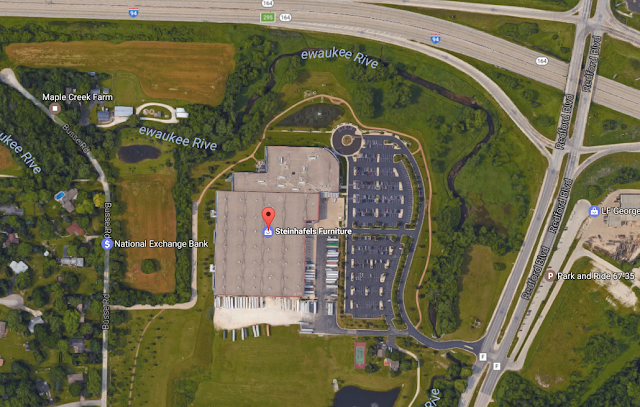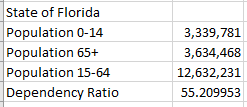Retail Site Selection for Cabelas's
Presented to:
Cabela's
Cabela's
Prepared by:
Ian Beal
University of Wisconsin Eau-Claire
Overview:
Cabela's is a popular sporting goods store for many people around the United States. It sells a wide variety of products from hunting clothes and boats, to cooking supplies and camping equipment. Cabela's is known for their extravagant stores that often feature hundreds of head-mounts and sometimes large aquariums.
LocationPro LLC has been hired to find a new location for a Cabela's in Waukesha County Wisconsin. Cabela's believes they are missing a section of the market to the west of Milwaukee and would like to put in a new store location. Location is very important for customers when deciding what outdoor store to purchase their goods at. Most outdoors stores sell the same brand products for the same price. This means it is imperative that the store is in the proper location to get people in their store and not their competitors. Esri's Business Analyst will be used to analyze customer demographics, trade areas, market structure, a gravity model, and to create a rank of the most suitable locations for the new store.
Methods:
Demographics:
It is important to understand that Cabela's has a great reputation and many people prefer to shop there instead of other sporting goods stores such as Gander Mountain. Being located close to another sporting goods store is not a deal breaker. It is more important that the proper target market is found and that a store can be located in that area. The best store location was calculated using the following population parameters:
This generalization of customers will produce areas that have a high amount of population and that have a high amount of income. This will result in areas that can be very lucrative for business. Having a store in an area that has a large amount of people that have extra money to spend on recreational activities is good for business. Many people do not have extra money and time to spend on outdoor activities. People who make more than $75,000 a year are likely to have a job that allows them enough vacation time to go on extravagant hunting trips, hiking trips and other vacations that will require supplies from Cabela's. A store that is located near lots of people who make more than $75,000 will experience good sales numbers. These demographics were used in order to rank 3 possibly sites for a new Cabela's in Waukesha County.
Rank Sites:
3 Possible Locations were selected based on the area available, and if a new building could be built on the land there. These possible locations were entered into Business analyst and a site ranking tool was ran. This tool look into account the total population, total households, and household income from $75,000 to $150,000 in a two mile radius around the possible sites. It then ran a formula that determined the best spot out of these three locations. The algorithm determined that the middle location was the best spot.
Trade Areas:
To further understand if the ranked sites are actually the best location for the new store, a drive times map was made to show the area that is within a half hour drive of the new locations. Because the stores are located near another, only one store was used to show the drive time. The whole Milwaukee area is located within a half hour drive of the possible locations.
Each site is located within close proximity to a highway and that allows for easy access to all the surrounding area. Nearly all of Waukesha County and more is within a half hour of the sites.
Market Structure:
Cabela's is a powerhouse sporting goods retailer that has few competitors that can shelf as many products and provide as many services as they do. Gander Mountain is one of the main stores that compete with them. It is well known that Gander Mountain is struggling financially and just got bought out by a Camping retailer. The map below shows where the only Gander Mountain in Waukesha County and its proximity to the potential new Cabela's location.
Gravity Model/ Point of Indifference:
The gravity model or point of indifference is a formula that helps determine what store or place people will go to shop if they are from a certain area.
Site 2 from the Ranked Sites map is a field that is located slightly further west. This is not a big deal because the interstate runs right up to it and allows for Cabela's to build their own structure.
All of the data from demographic, market analysis, and location data indicates that this location would be a good spot to locate a new Cabela's. This location is within a half hour for all of Milwaukee and the surrounding area. It would be grabbing a whole group of customers that previously had to drive far north of Milwaukee to reach the closest Cabela's. This would also bring in customers from the south and to the west that currently do not have access to a great sporting goods store like Cabela's.
Cabela's is a popular sporting goods store for many people around the United States. It sells a wide variety of products from hunting clothes and boats, to cooking supplies and camping equipment. Cabela's is known for their extravagant stores that often feature hundreds of head-mounts and sometimes large aquariums.
LocationPro LLC has been hired to find a new location for a Cabela's in Waukesha County Wisconsin. Cabela's believes they are missing a section of the market to the west of Milwaukee and would like to put in a new store location. Location is very important for customers when deciding what outdoor store to purchase their goods at. Most outdoors stores sell the same brand products for the same price. This means it is imperative that the store is in the proper location to get people in their store and not their competitors. Esri's Business Analyst will be used to analyze customer demographics, trade areas, market structure, a gravity model, and to create a rank of the most suitable locations for the new store.
Methods:
Demographics:
It is important to understand that Cabela's has a great reputation and many people prefer to shop there instead of other sporting goods stores such as Gander Mountain. Being located close to another sporting goods store is not a deal breaker. It is more important that the proper target market is found and that a store can be located in that area. The best store location was calculated using the following population parameters:
- 2016 Total Population
- 2016 Total Households
- 2016 Household Income $75,000 - $99,000
- 2016 Household Income $100,000 - $149,000
This generalization of customers will produce areas that have a high amount of population and that have a high amount of income. This will result in areas that can be very lucrative for business. Having a store in an area that has a large amount of people that have extra money to spend on recreational activities is good for business. Many people do not have extra money and time to spend on outdoor activities. People who make more than $75,000 a year are likely to have a job that allows them enough vacation time to go on extravagant hunting trips, hiking trips and other vacations that will require supplies from Cabela's. A store that is located near lots of people who make more than $75,000 will experience good sales numbers. These demographics were used in order to rank 3 possibly sites for a new Cabela's in Waukesha County.
Rank Sites:
 |
| Figure 1: Ranked Sites |
Trade Areas:
To further understand if the ranked sites are actually the best location for the new store, a drive times map was made to show the area that is within a half hour drive of the new locations. Because the stores are located near another, only one store was used to show the drive time. The whole Milwaukee area is located within a half hour drive of the possible locations.
 |
| Figure 2: Drive Times |
Market Structure:
Cabela's is a powerhouse sporting goods retailer that has few competitors that can shelf as many products and provide as many services as they do. Gander Mountain is one of the main stores that compete with them. It is well known that Gander Mountain is struggling financially and just got bought out by a Camping retailer. The map below shows where the only Gander Mountain in Waukesha County and its proximity to the potential new Cabela's location.
 |
| Figure 3: Market Structure |
Gravity Model/ Point of Indifference:
The gravity model or point of indifference is a formula that helps determine what store or place people will go to shop if they are from a certain area.
 |
| Figure 4: Gravity Model |
In this formula:
d = distance on a major highway from city A to B
Pb = population of city B
Pa = population of city A
this is set to equal:
Dab = the breaking point from city A, measured in miles along the road to city B
The three cities to be examined using this model are: Milwaukee, Mukwonago, and Oconomowoc.
The breaking points for these cities to Waukesha were:
Mukwonago: 9.9 Miles
Milwaukee: 5.1 Miles
Oconomowoc: 14.5 Miles
This means people who reside in these cities are likely to shop in within that distance of the city they live in. This is where the point of indifference comes into play. Cabela's is a store that people people are willing to travel outside their typical area to shop. Just because they are not within that distance of Cabela's does not mean they will not shop there.
Conclusion:
Looking back at the Ranked Sites map (figure 1) the best location for a new Cabela's would be where a Steinhafels is currently located. It would be very expensive to buy out a company that has been there for a long time and owns a very good location. Cabela's often builds their own buildings and that is what would be recommended in this situation.Site 2 from the Ranked Sites map is a field that is located slightly further west. This is not a big deal because the interstate runs right up to it and allows for Cabela's to build their own structure.
All of the data from demographic, market analysis, and location data indicates that this location would be a good spot to locate a new Cabela's. This location is within a half hour for all of Milwaukee and the surrounding area. It would be grabbing a whole group of customers that previously had to drive far north of Milwaukee to reach the closest Cabela's. This would also bring in customers from the south and to the west that currently do not have access to a great sporting goods store like Cabela's.




















